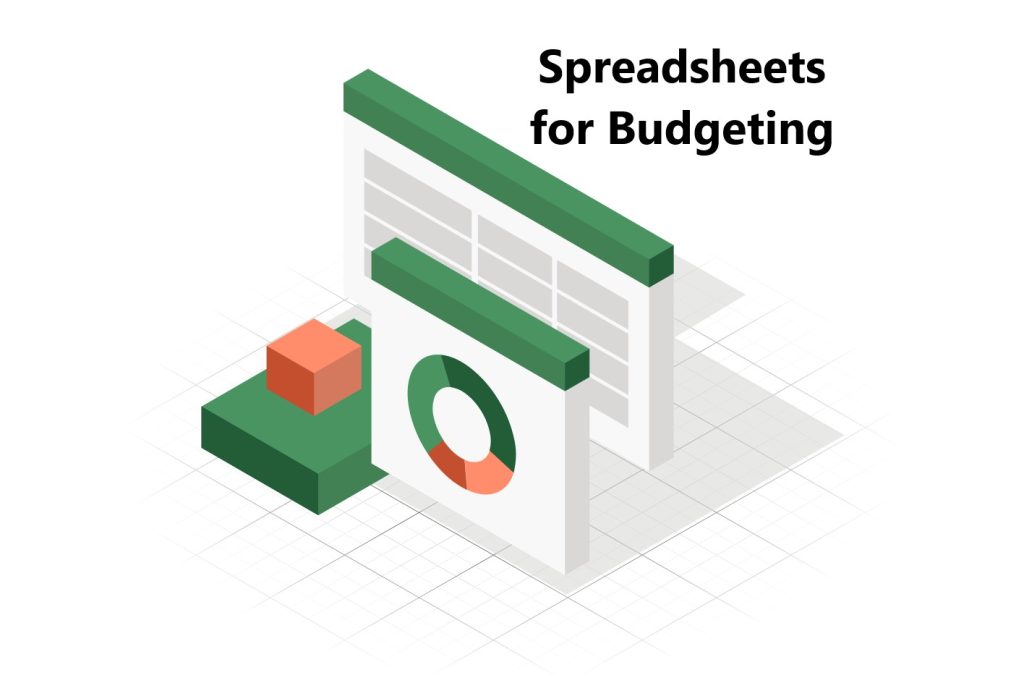Using spreadsheets for budgeting is a practical and powerful method that allows businesses to manage their finances efficiently. Spreadsheets offer flexibility and customization, making them ideal for businesses looking to track expenses, allocate resources, and plan for future financial needs. By using spreadsheets for budgeting, companies can ensure financial stability, make informed decisions, and optimize spending.
Budgeting is one of the most essential components of a successful business strategy. Whether a small startup or a large corporation, having a clear understanding of where funds are coming from and where they are going is crucial. Using spreadsheets for budgeting gives businesses the ability to maintain visibility over their financial health and adjust strategies based on real-time data. As businesses grow and expenses fluctuate, a solid budgeting framework becomes even more important for maintaining control over finances.
Why Spreadsheets Are Essential for Budgeting
One of the primary advantages of using spreadsheets for budgeting is their flexibility. Unlike specialized budgeting software, which may have limitations, spreadsheets allow businesses to tailor the budgeting process to fit their specific needs. This adaptability ensures that companies of any size or industry can easily modify their budget templates to track income, expenses, and cash flow. Furthermore, spreadsheets provide the ability to add or remove categories, customize formulas, and include detailed breakdowns, making them an indispensable tool for financial planning.
In addition to flexibility, using spreadsheets for budgeting provides businesses with real-time updates. When new financial information becomes available, spreadsheets can be easily modified to reflect the latest data. This allows businesses to stay proactive and adjust their budgets based on current performance, whether adjusting forecasts or reallocating funds as needed. Spreadsheets also make it easy to analyze historical data, helping businesses identify trends, seasonality, or patterns in spending that inform future budgeting decisions.
For businesses operating on tight margins, spreadsheets offer a cost-effective solution. Many companies already have access to tools like Microsoft Excel or Google Sheets, which means they can create detailed budgets without investing in expensive financial software. By leveraging the tools they already have, businesses can streamline their financial planning without straining their budget.
Key Features of Budgeting with Spreadsheets
When using spreadsheets for budgeting, it’s important to incorporate key features that enhance accuracy and efficiency. One critical feature is the ability to create dynamic formulas, which automatically calculate totals, percentages, and variances. For example, businesses can create formulas that track expenses relative to revenue, providing instant insights into profitability. This functionality minimizes errors and ensures that financial data is always accurate.
Another feature that makes spreadsheets invaluable for budgeting is the ability to categorize expenses and income. By creating separate tabs or columns for fixed and variable costs, businesses can easily track where their money is going. Categories like salaries, utilities, and marketing costs can be customized based on the company’s specific needs. Categorizing expenses also helps businesses compare budgeted versus actual spending, making it easier to spot discrepancies and take corrective action.
Furthermore, using spreadsheets for budgeting allows for effective financial forecasting. With data organized clearly, businesses can project future cash flows and expenses based on past trends and assumptions. This helps in decision-making processes such as determining whether to expand operations, hire new staff, or reduce unnecessary costs. Forecasting using spreadsheets gives businesses a clearer view of long-term financial sustainability.
Best Practices for Budgeting with Spreadsheets
To get the most out of using spreadsheets for budgeting, it’s important to follow best practices. First, keep the structure of the spreadsheet simple and organized. A well-structured budget spreadsheet should be easy to navigate, with clear headings, logical grouping of expenses, and consistent use of formulas. Avoid cluttering the spreadsheet with unnecessary data or overly complicated formatting, as this can lead to confusion.
Another best practice is to update the budget regularly. Businesses should review their budgets at least once a month to ensure they are on track and identify any discrepancies between projected and actual spending. Timely updates allow businesses to stay proactive and make necessary adjustments before financial issues become problematic.
Collaboration is also key when using spreadsheets for budgeting. Spreadsheets stored on cloud-based platforms like Google Sheets allow team members to access and edit the budget in real time. This promotes transparency and ensures that all stakeholders are on the same page when making financial decisions. Collaborative budgeting also reduces the risk of errors and miscommunication.
Lastly, businesses should consider using templates when budgeting with spreadsheets. Budget templates save time by providing a pre-formatted structure for recording expenses, tracking income, and forecasting future cash flow. Many free and customizable budget templates are available online for various industries and business sizes. Templates ensure consistency and help streamline the budgeting process, especially for businesses that may not have a dedicated finance team.
Challenges and Solutions in Spreadsheet Budgeting
Despite the numerous advantages of using spreadsheets for budgeting, there are also potential challenges. One common issue is the risk of manual errors when entering data. Incorrect formulas or misplaced numbers can lead to inaccurate financial insights, affecting decision-making. To mitigate this, businesses should conduct regular audits of their budget spreadsheets and use data validation tools to minimize mistakes.
Another challenge is the scalability of spreadsheets. As businesses grow, their budgeting needs may become more complex, requiring more sophisticated tools for financial management. At this point, businesses may consider integrating their spreadsheets with financial software or transitioning to more comprehensive budgeting platforms. However, spreadsheets remain an excellent starting point for most small and mid-sized businesses.
Data security is also a concern when using spreadsheets for budgeting. Companies must ensure that their budget files are stored securely and that access is restricted to authorized personnel. Using password-protected files or encrypted cloud storage solutions can help safeguard sensitive financial data.
Conclusion
Using spreadsheets for budgeting is an essential practice for businesses looking to manage their finances efficiently. The flexibility, customization, and cost-effectiveness of spreadsheets make them ideal for companies of any size. By organizing financial data, creating dynamic formulas, and forecasting future cash flows, businesses can make informed decisions that contribute to long-term success. While challenges such as data errors and scalability exist, following best practices can help businesses maximize the benefits of using spreadsheets for budgeting. As financial planning becomes increasingly critical, spreadsheets remain a powerful tool for companies seeking control over their financial future.


